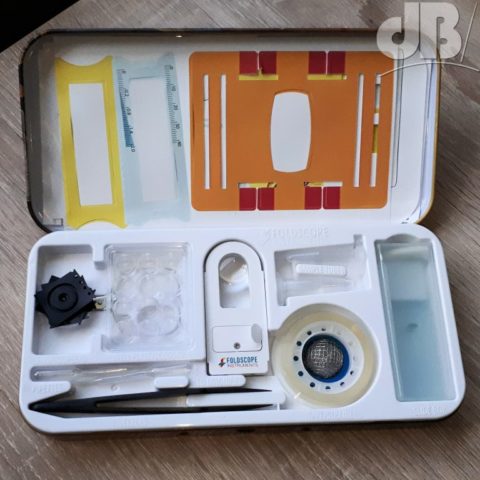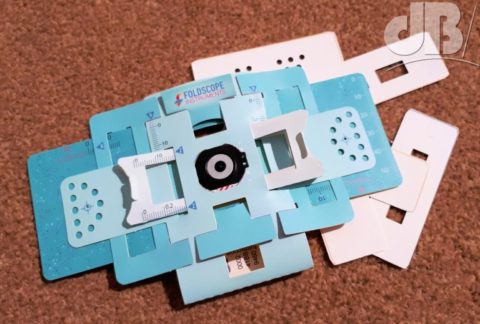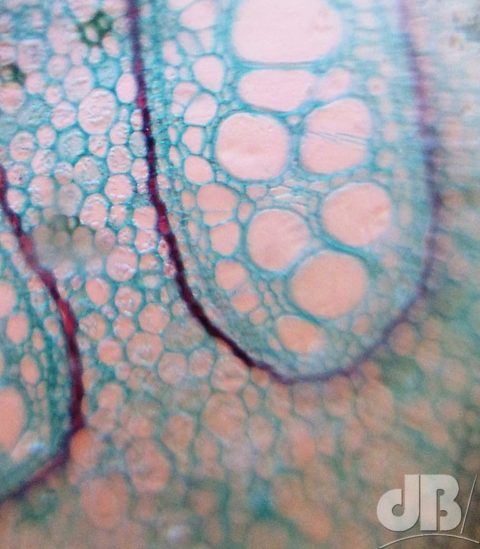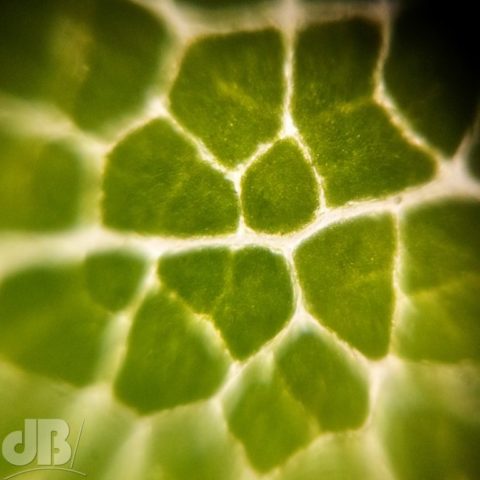As regular readers will know, I re-dug our old garden pond. Well, it’s just about half the size of the original, which was an oval about 6m long and 3m wide, but it’s finished, sort of, after a lot of hard work in the sun. It’s all terraced and lined and has a few plants and some clean gravel now. It was rained on heavily a few days ago, which should help with the eco-ness, and we have seen our first frog lurking behind a pot containing reeds. The original pond had dozens of frogs and plenty of frog spawn, which was donated and relocated. Might I hope for Great Crested Newts?

I am also keen to know what microscopic life might emerge and whether it needs “seeding” with water from a neighbour’s pond to help things along. In a very timely move, the team at Foldscope have just sent me one of their cardboard microscopes. This device was initially developed to help people in the developing world quickly examine samples of drinking water to ensure the absence of pathogenic creatures in the water. Of course, the applications are much wider than even that grand mission, with the wonderful notion of giving everyone inexpensive access to powerful microscopy, whether educator, student, hobbyist, (citizen) scientist.

The device is all you need, rather than a proper lab, with full-scale microscopes and chemical analysers, to check water quality in that context. It is several layers of carefully engineered card that you slot together (which didn’t take long at all) and then add a bead lens from the kit. Set up your slides and the platform can be adjusted to bring your sample into focus. The spherical microlens has an approximate enlargement factor of 140x.

I have carried out some tests with the sample slides provided with the kit, of a bee’s leg and fern cells and all seems to be working as it should. You can look through the microscope easily enough, but there is a relatively easy way to attach a connector to a mobile phone and then use the foldscope with a slide as the source for the camera, or actually, simply attach a lens to the phone with a spacer and a slide with a spacer and one of the other magnets to keep them in place. Seems to work quite well if you set the phone camera to maximum zoom and rock the slide slightly to bring the object into focus. This is a micro view of a beech tree leaf from our garden.

Next step is to prepare a #PondLife sample.